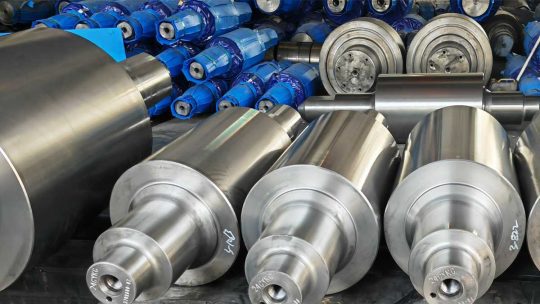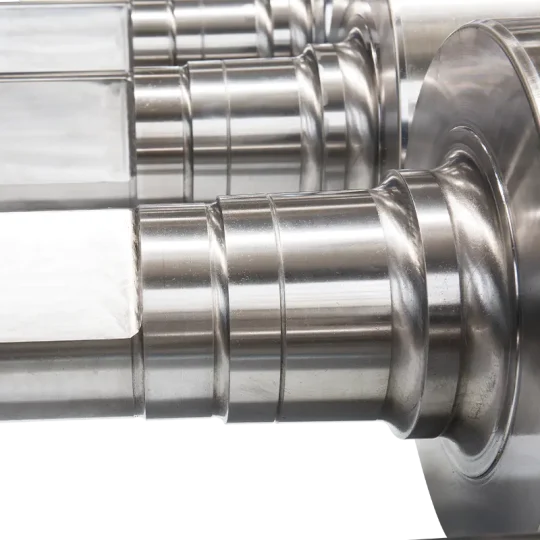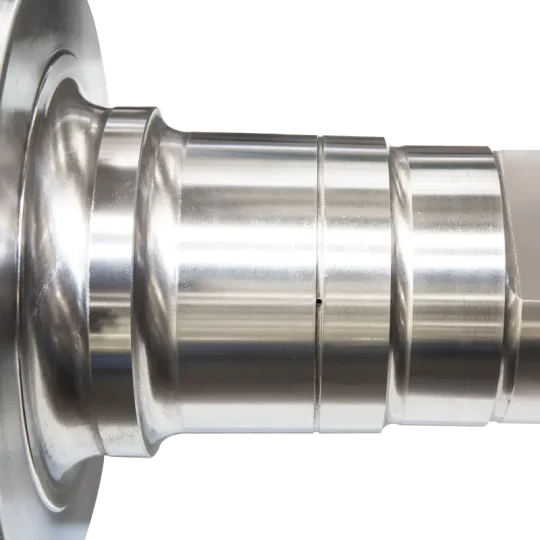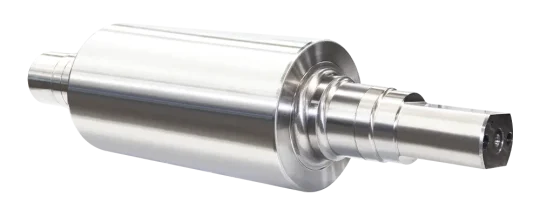The carbon content of adamite rolls is in the range of 1.3%-2.2%, and its mechanical properties are between those of steel and iron. It has both the high strength and toughness of cast steel rolls and the good wear resistance of cast iron rolls, and is commonly known as "semi-steel" in China. When the carbon content of semi-steel rolls is greater than 1.8%, they are also called high-carbon semi-steel rolls.

After a special heat treatment process, compared with alloy cast steel roll it has a good abrasion resistance, and compared with cast iron roll it has a good strength and toughness. The adamite roll's prominent feature is the small variation in hardness of shell, and has a good abrasion resistance and bite performance, in addition, the adamite roll is cast as a whole, there is no weak interface in compound casting roll, and thus it has a better anti-accident capacity.


Adamite rolls hardness withstand greater impact loads without breaking easily. This improves the safety and stability of Adamite rolls for steel rolling mills. HSD hardness of 40-65 suits roughing rolling stands. Adamite rolls hardness meets hardness requirements during roughing rolling. Nickel enhances diamond rolls’ strength, toughness, and wear resistance. Adamite rolls hardness also boosts thermal fatigue and corrosion resistance. Adamite rolls are widely used in roughing stands.
The cast iron outer layer provides better wear resistance, while the Adamite rolls hardness core provides higher strength and hardness. The excellent wear resistance of the cast iron outer layer enables the adamite roll to withstand the friction and wear of the metal blank, extending the service life of the roll. Compared with all-steel rolls and other materials, adamite rolls have lower manufacturing costs, but their performance can still meet the requirements of the rolling process and have good cost-effectiveness. Adamite steel rolls can meet the rolling needs of metal billets of different sizes and materials.
Adamite rolls for rough stand.

| Chemical Analysis | ||||||||
| Crades | C | Si | Mn | P | S | Ni | Cr | Mo |
| AD140 | 1.3-1.5 | 0.3-0.6 | 0.7-1.4 | ≤0.035 | ≤0.03 | - | 0.8-1.6 | 0.2-0.6 |
| AD140I | 1.3-1.5 | 0.3-0.6 | 0.7-1.1 | ≤0.035 | ≤0.03 | 0.2-0.5 | 0.8-1.2 | 0.2-0.6 |
| AD160 | 1.5-1.7 | 0.3-0.6 | 0.7-1.1 | ≤0.035 | ≤0.03 | - | 0.8-1.2 | 0.2-0.6 |
| AD160I | 1.5-1.7 | 0.3-0.6 | 0.8-1.3 | ≤0.035 | ≤0.03 | ≥0.2 | 0.8-2.0 | 0.2-0.6 |
| AD160I | 1.7-1.9 | 0.3-0.8 | 0.6-1.1 | ≤0.035 | ≤0.03 | 0.5-2.0 | 0.8-1.5 | 0.2-0.6 |
| AD190 | 1.8-2.0 | 0.3-0.8 | 0.8-1.2 | ≤0.035 | ≤0.03 | 1.0-2.0 | 1.5-3.5 | 0.2-0.6 |
| AD200 | 1.9-2.1 | 0.3-0.8 | 0.8-1.2 | ≤0.035 | ≤0.03 | 0.6-2.0 | 0.6-2.0 | 0.3-0.8 |
| Physical Properties | ||
| Crades | Hardness | Tensile strength |
| AD140 | 40-55HSD | ≥450MPA |
| AD140 series | 40-50HSD | ≥450MPA |
| AD160 | 40-50HSD | ≥450MPA |
| AD160 series | 40-60HSD | ≥450MPA |
| AD180 | 40-60HSD | ≥450MPA |
| AD190 | 55-65HSD | ≥450MPA |
| AD200 | 50-65HSD | ≥450MPA |